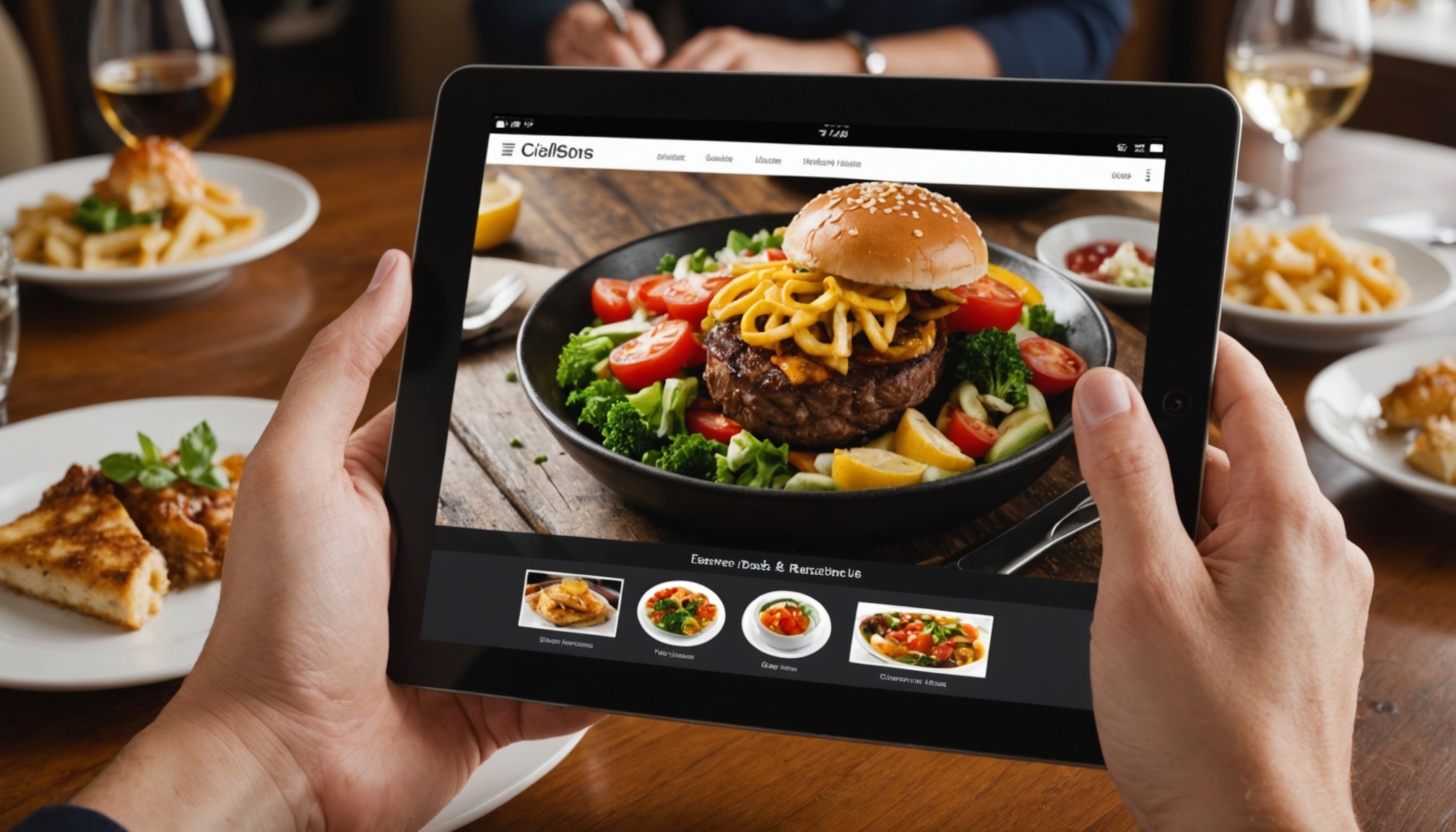Overview of Digital Menus in the UK Dining Scene
Digital menus have redefined the landscape of the UK dining scene, merging restaurant technology with traditional dining experiences. Historic menu formats saw static, often printed menus defining dining establishments. However, digital menus have evolved, introducing dynamic components such as QR codes, tablet interfaces, and mobile-friendly web pages.
In the context of restaurant technology, digital menus function by presenting dish options electronically. This includes descriptions, pricing, imagery, and sometimes even dietary information or recipe sources. The components extend to interactive ordering systems and payment capabilities, integrating seamlessly into a restaurant’s existing operations.
Also read : Revolutionizing UK Manufacturing: Leveraging IoT Innovations for Enhanced Operational Efficiency
The adoption of digital menus in the UK is on an upward trajectory. Current trends reveal that restaurants are increasingly investing in such technology not only to streamline operations but also to enhance customer engagement. The trend is driven by the demand for contactless dining solutions post-pandemic, with many eateries adopting technologies to safeguard health while boosting efficiency. This aligns with the shift towards more personalized dining experiences and the need for businesses to remain competitive.
Understanding these advancements in the context of the UK dining environment is pivotal for grasping the full impact of digital menus on restaurant practices and customer satisfaction.
Also read : Transforming UK Logistics: Harnessing Blockchain Innovations for Unprecedented Supply Chain Clarity
Impact on Customer Satisfaction
Incorporating digital transformation within restaurants has notably improved customer satisfaction levels. Industry statistics reveal that satisfaction scores rise when diners interact with digital menus. Customers appreciate the efficient, contactless experience along with transparent information about dishes which heightens their overall dining experience.
Comparative analysis of traditional versus digital menu usage consistently shows that digital menus receive more favourable feedback. Customers report enhanced convenience and faster service times. This shift reflects a growing preference for integrative technology that seamlessly meets user demands.
Successful case studies highlight how well-crafted digital menus can substantially bolster customer satisfaction. For instance, a London-based restaurant saw a 30% increase in repeat visits after adopting interactive digital menus. These menus enabled users to personalise orders easily and access detailed dietary information. Consequently, it fostered a strong connection between the establishment and its patrons, showcasing the tangible benefits of digital transformation.
Furthermore, the adaptation of such technologies typically leads to improved customer engagement due to their interactive nature and accessibility. As restaurants continue to transition, understanding these dynamics is crucial to leveraging technology to elevate the dining experience and ensure sustained customer loyalty.
Enhancements to the Dining Experience
Enhancing the dining experience through interactive menus has become a focal point for restaurants. The features integrated into these tools often greatly impact user experience, providing levels of personalisation previously unattainable with traditional menus. Various components, like easy customisation of dishes and tailoring meal decisions according to individual preferences, empower customers to make informed choices.
Visuals and interactivity stand as key attractions in this digital transformation. High-quality images, engaging descriptions, and sometimes even videos showcasing dishes can capture attention more effectively. Such features contribute to an immersive dining journey, influencing customer preferences toward establishments offering detailed insights into their food offerings.
Usability and accessibility play significant roles in elevating the customer experience. Designing digital menus to be intuitive, whether accessed via QR codes, apps, or websites, ensures a seamless interaction. For diners with accessibility needs, features like voiceovers or adjustable text sizes present inclusive opportunities to enjoy their meals unimpeded.
Restaurants leveraging these enhancements observe not only increased satisfaction but also prolonged engagement with their clientele. The strategic use of technology offers benefits in attracting and retaining customers, underscoring the potential of digital innovation in reshaping the dining landscape.
Challenges of Implementing Digital Menus
Transitioning to digital menus presents several implementation challenges that restaurant management needs to navigate carefully. A common obstacle is the initial resistance to change from both staff and customers accustomed to traditional ways. Staff may require training to efficiently utilise new technologies, as understanding and comfort with these systems are paramount.
Technical issues also pose a significant hurdle. For seamless integration, reliable internet connectivity and compatible devices are essential. It is crucial to anticipate potential failures and develop contingency plans, such as having backup systems or protocols to handle technical disruptions.
Maintenance requirements cannot be overlooked. Digital menus necessitate regular updates to ensure menu accuracy, compliance with dietary information regulations, and alignment with current offerings. Furthermore, maintaining device hardware and software is an ongoing task that demands attention and resources.
Insights from restaurant owners who have successfully adopted digital menus emphasise the importance of gradual implementation and employee involvement in the process. Building a robust support system can alleviate stress and facilitate a smoother transition.
Additionally, tackling these challenges involves selecting the right technology providers who offer reliable support and operational training, thereby enhancing the overall effectiveness and efficiency of the transition process. This comprehensive approach is instrumental in overcoming the hurdles of digital transformation.
Best Practices for Digital Menu Adoption
Successfully embracing digital innovation is key for a restaurant’s long-term success. One of the primary best practices when adopting digital menus is strategic planning. This involves assessing how these menus can seamlessly integrate into existing operations without disrupting the flow. Detailed planning ensures that the transition complements current workflows, enhancing efficiency and service quality.
Staff training is crucial for harnessing the benefits of digital menus. Employees should be educated on the functionalities of digital interfaces, enabling them to guide customers and resolve any issues swiftly. Moreover, customer education is equally important. Restaurants can provide brief tutorials or help sections to make patrons comfortable with new systems.
Selecting the right technology and service providers forms the backbone of effective digital adoption. Restaurants are advised to partner with reputable providers known for reliable support and user-friendly interfaces. This decision ensures that the technology chosen is robust and adaptable to future needs.
Lastly, restaurant success in digital adoption often involves continuous feedback loops. Gathering insights from both staff and customers can highlight areas of improvement, allowing for fine-tuning of digital menus and ensuring they meet evolving dining preferences. This proactive approach not only aids immediate integration but solidifies the restaurant’s position as a tech-savvy, customer-oriented establishment.











